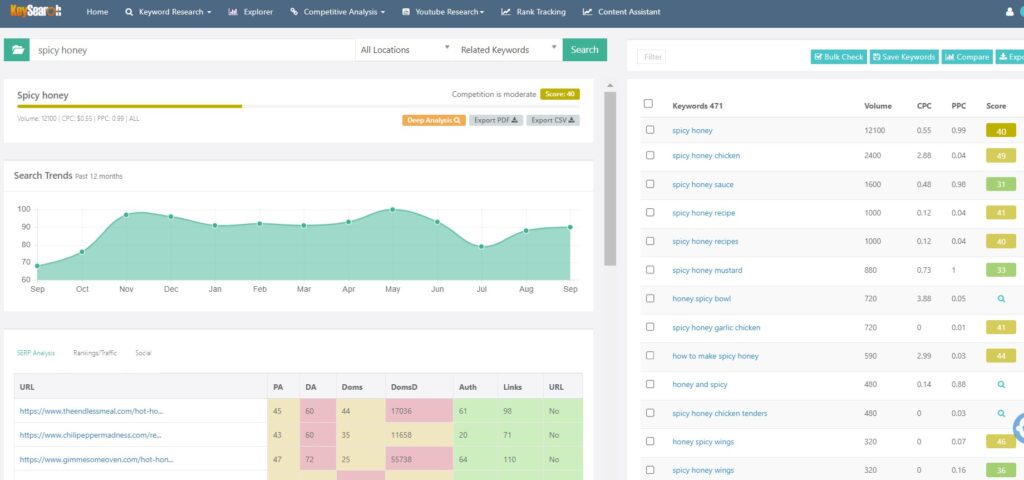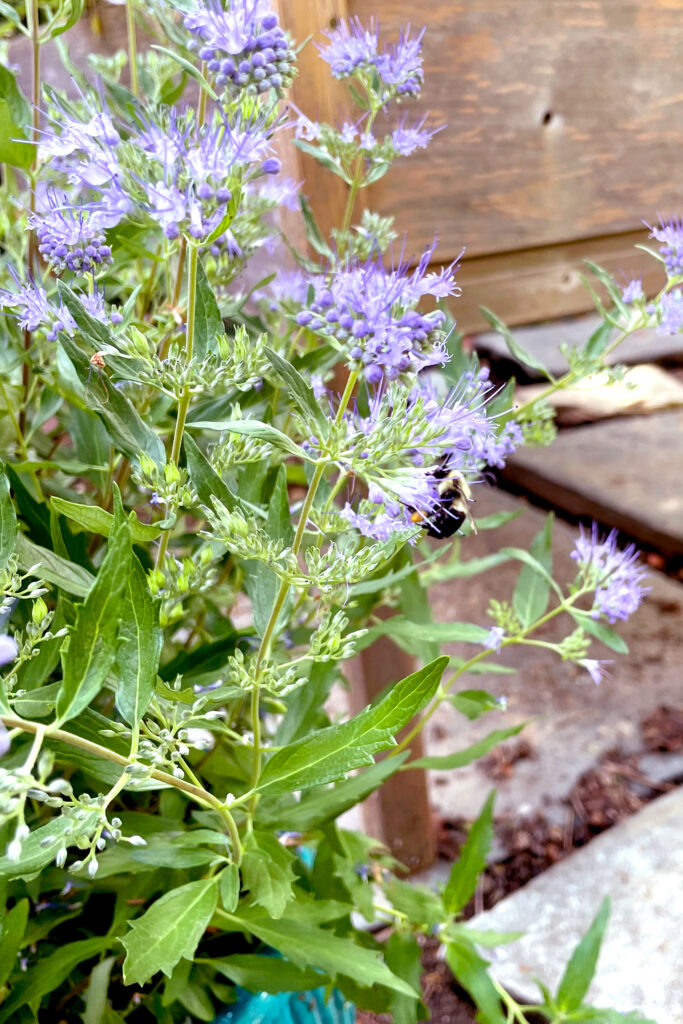In today’s digital world, having a buzzing online presence is a must for beekeepers who want to spread the word about their passion for bees and sell their products. Ranking higher on Google is a great way to reach more people locally or nationally who are searching for your honey! If you have no clue where to start with optimizing your site, I’m covering 7 bee-rilliant SEO tips for beekeepers (with lots of puns mixed in) to help you attract more potential customers like flies to honey 😉 (I wasn’t kidding about the puns!)

Know Your Audience
Before we can really dig into my SEO tips for beekeepers, you need to know who you’re trying to target. Are you trying to sell your honey and beeswax products online? Reach local customers so they’ll buy products directly from you? Or are you more in the educational space and you have services or courses to help people become beekeepers?
Knowing who you’re trying to serve will help make sure you’re trying to rank for the right things that your audience is searching for in order to drive more conversions!
Do Keyword Research
Incorporating keywords on your website is important for Google to know what to rank you for, and you need to find keywords that people are searching for and that don’t have too much competition (the more competitive the keyword, the harder it will be to rank for).
Tools like Google’s Keyword Planner, Ubersuggest, SEMrush, or Keysearch (my personal favorite) can help you find high-traffic keywords (and their seasonal trends) related to beekeeping, honey products, or bee-friendly gardening. After you (honey)comb through the keywords and find the best ones to target, incorporate them naturally throughout your website’s content, including your website copy, blog posts, product descriptions, and title tags and meta descriptions.

Create Regular Content
Good content is the honey that attracts both search engines and human visitors. Blog posts might not seem like a relevant SEO tip for beekeepers, but it definitely is! Your blog posts allow you to target more keywords (which means reaching more people), show Google that your site is active, keep people on your site longer, show off your expertise, connect with potential customers, and give you the opportunity to showcase your services and products.
If you sell honey or beeswax products, you could create gift guides for holidays or recipes featuring your products to get people interested in buying them. If you have a course for aspiring beekeepers, you could write content answering questions about how to get started with beekeeping and link to your course.
So think of ways you could use blog posts to reach your target audience, because the more helpful and relevant your content, the higher you’ll climb in those search results.
Write Detailed Product Descriptions
Product descriptions can make or break your conversions, and if they’re super short and generic so people are leaving your product pages quickly, that could hurt your rankings. Think about what is important to your customers, and make sure you include that information in the description.
If your customers really care about where the honey is made, include the location(s) of your apiary. If they like using the honey for medicinal purposes, share some different things that the honey could be used for. And if your honey comes in a variety of flavors, share what food or cheese they’re best paired with.
Finding ways to connect with what your customers are most interested in can really help keep them engaged and interested in purchasing your products! And don’t forget to incorporate your keywords in your product descriptions 😉

Join the Social Beehive
Social media can be your virtual beehive! I recommend joining social platforms that your target audience likes to hang out to share your beekeeping adventures and products. Use trending hashtags and mingle with fellow bee lovers to grow your online following. Sharing your content on social media not only boosts your online visibility (and helps you reach more customers in more places) but also drives more traffic back to your website – and the more quality traffic you get to your site, the more it will help your rankings on Google.
Make Your Site Mobile-Friendly
Something that you can’t miss when optimizing your website for potential customers (and getting good rankings on Google!) is ensuring it’s mobile-friendly. This means that it’s easy to navigate while accessing using a mobile device, and that all the text and images are displayed correctly (and large enough to see clearly).
Plus, it ensures that your visitors on smartphones and tablets have a smooth experience, and happy visitors are good for driving more business.

Post Bee-utiful Images with Alt Text
If you’re selling products, you need to make sure you’re using plenty of high-quality images showcasing your amazing products. If they’re dark or unclear, it could be a turn-off to potential customers.
You can also optimize them by naming images with clear, descriptive titles, as well as making sure you are using the correct image dimensions and that you aren’t using massive file sizes that can slow down your website and loading speed.
You will also want to think about alt text for your images. Alt text is a short description that you add to images on your website (also known as alt tags). Writing descriptive and concise alt text enhances user experience and accessibility as it describes the image’s content when it can’t be seen, which is especially useful for visually impaired users, as well as contributing to SEO by helping search engines understand what your image is and why it’s being used.
Sweeten the Deal with Reviews
Positive reviews and testimonials from your happy customers can work wonders for your online reputation, especially if you’re getting great reviews on your Google Business Profile account. Encourage your satisfied customers to leave reviews on your website or Google Business Profile because search engines love user-generated content, reviews with keywords in them can help you rank higher for them, and glowing reviews can give your website a sweet boost.

By following my top seven SEO tips for beekeepers, you’ll see your beekeeping website generate more buzz in the digital world. Remember, SEO is like beekeeping – it takes time and patience. Keep at it, and watch your website increase in the search rankings and reaching more customers!